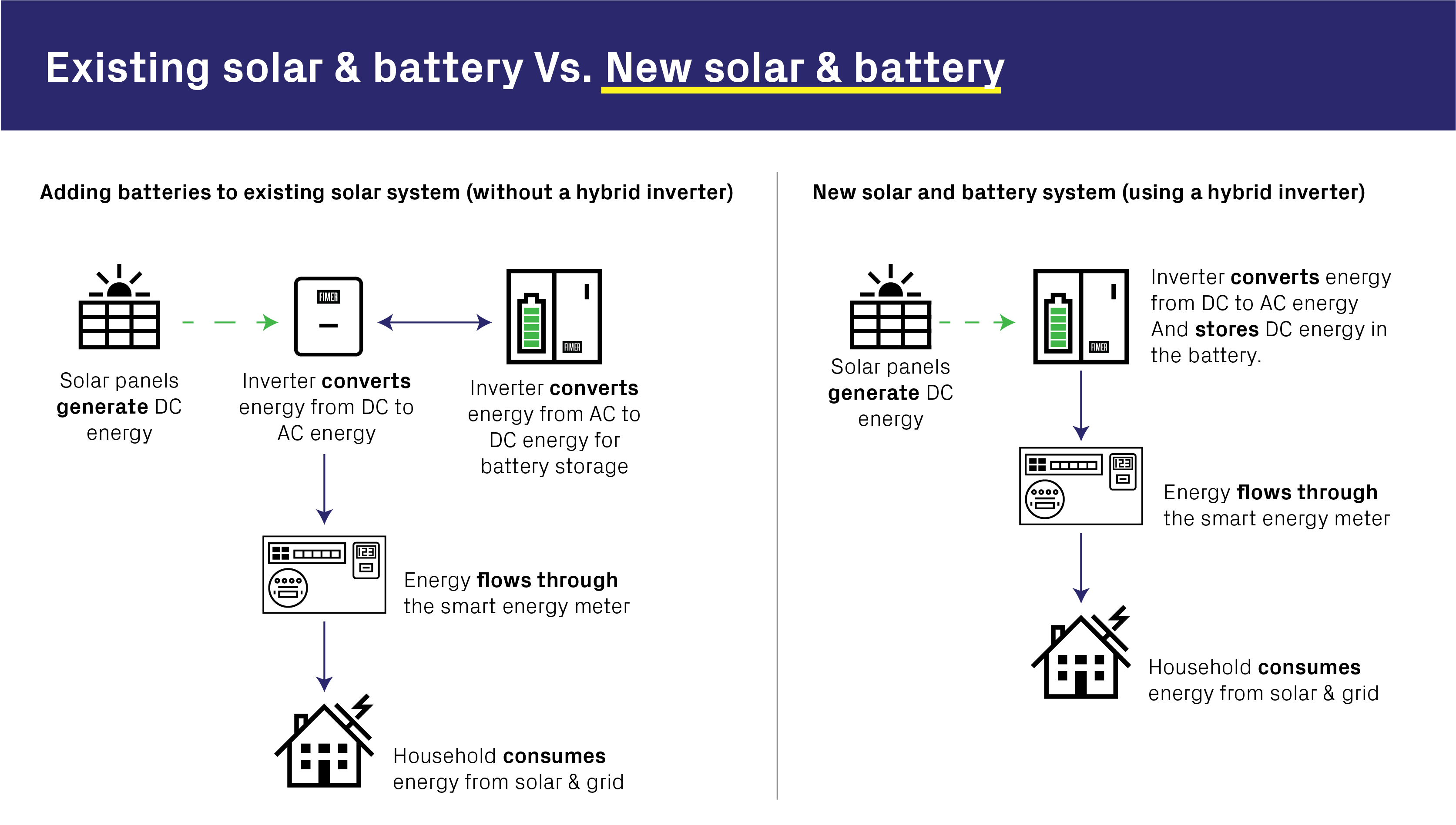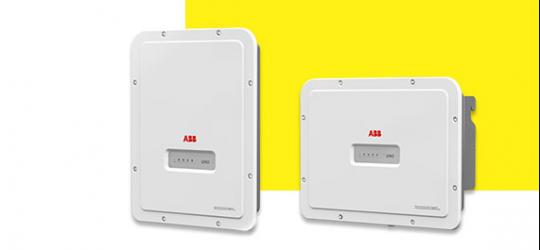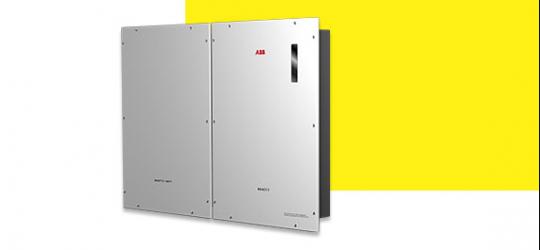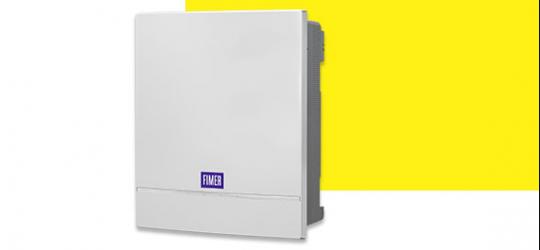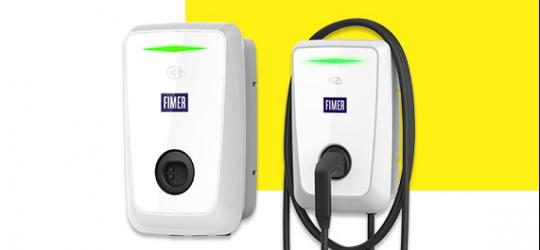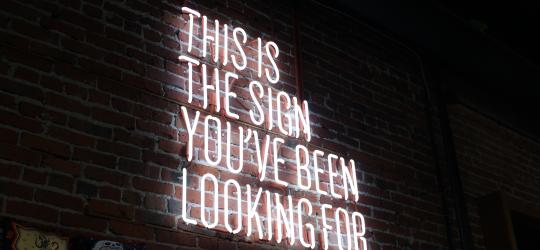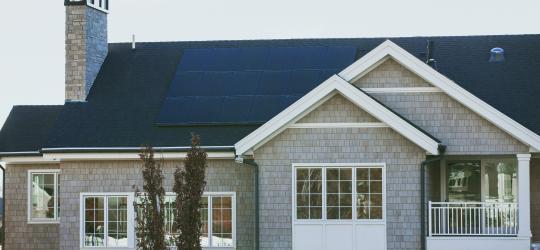| FIMER Australia | |||
|---|---|---|---|
 |
 |
 |
 |
| FIMER for home | FIMER for business | FIMER for installers | About FIMER Australia |
What is the difference in inverters for the home?
When looking to get solar, there are a few types of inverters available in the market to choose from. What you will need will depend on your house and household needs.
This article will discuss many of the terms you will come across when researching solar for your home.
Single-phase and three-phase
The phase is talking about the type of electricity connection coming into your home from the grid. Most homes in Australia and New Zealand will have a single-phase connection into the home, as nearly all household appliances only require a single-phase electricity supply.
If your home has a three-phase connection, your electricity supply will be at a higher voltage than a single-phase supply. You can put different appliances onto different phases to manage the balance of single-phase loads. If you have equipment or appliances that use a lot of power to operate, you may need a three-phase connection to ensure you can have a reliable power source for that equipment to run.
If you're unsure how many phases your home has, you can find out by looking at your energy switchboard. If you have one single circuit breaker for a "main switch", you will have a single-phase connected house. If you have a circuit breaker with three inputs joined together for the "main switch" you have a three-phase powered home.
If you have a single-phase connected home, you will need to look at a single-phase inverter (sometimes abbreviated as 1P). FIMER's single-phase range includes the UNO range (2.0kW, 3.0kW, 4.0kW, 4.6kW, 5.0kW and 6.0kW) and the REACT 2 inverter (3.6kW & 5.0kW).
However, suppose you are on a three-phase connected property. In that case, the simplest option is to look at installing a three-phase inverter (sometimes abbreviated as 3P). Another option (slightly more complex) is to consider installing one or multiple single-phase inverters on each phase. FIMER's three-phase range for the home is the PVS-10/15 range (10kW, 12.5kW and 15kW).
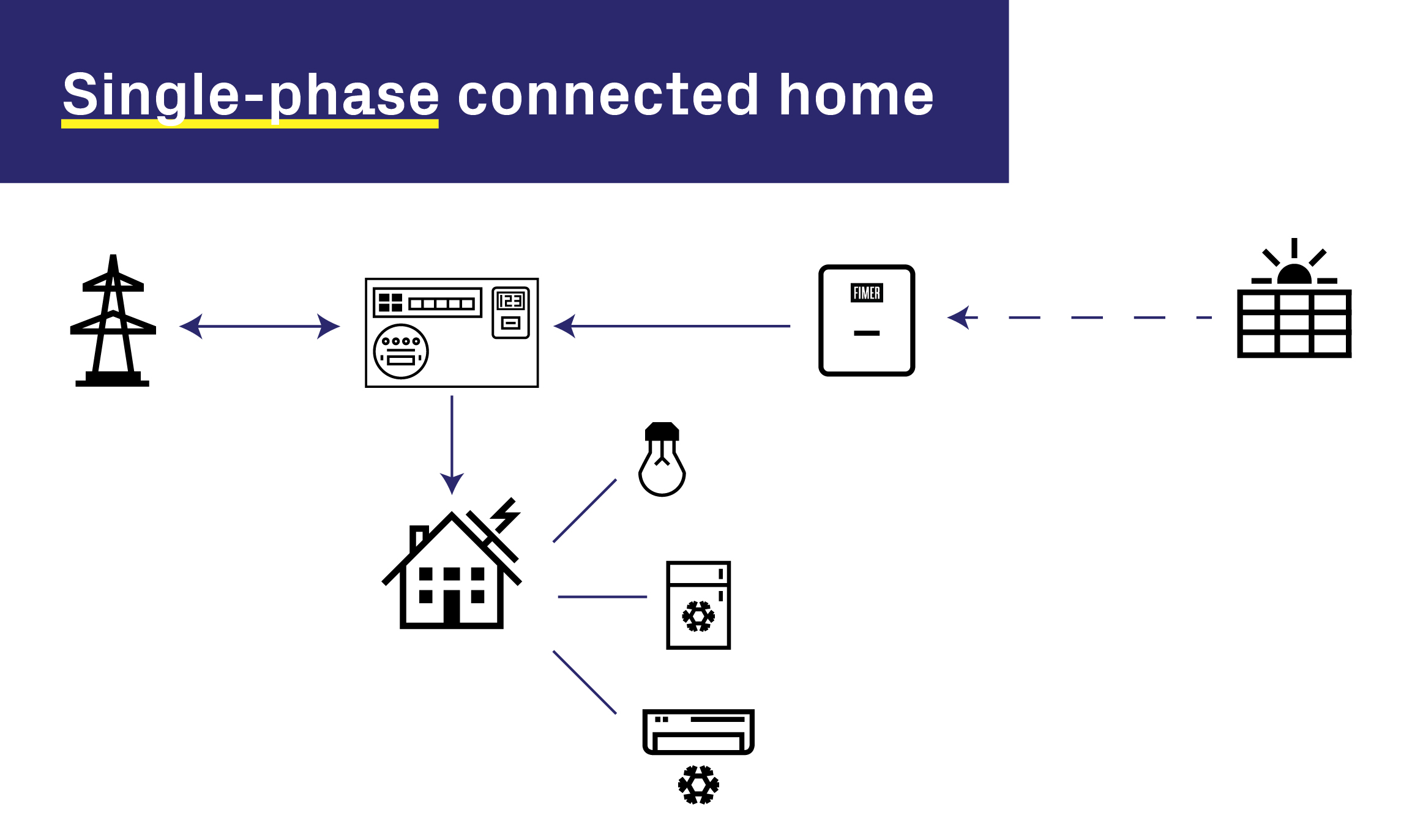
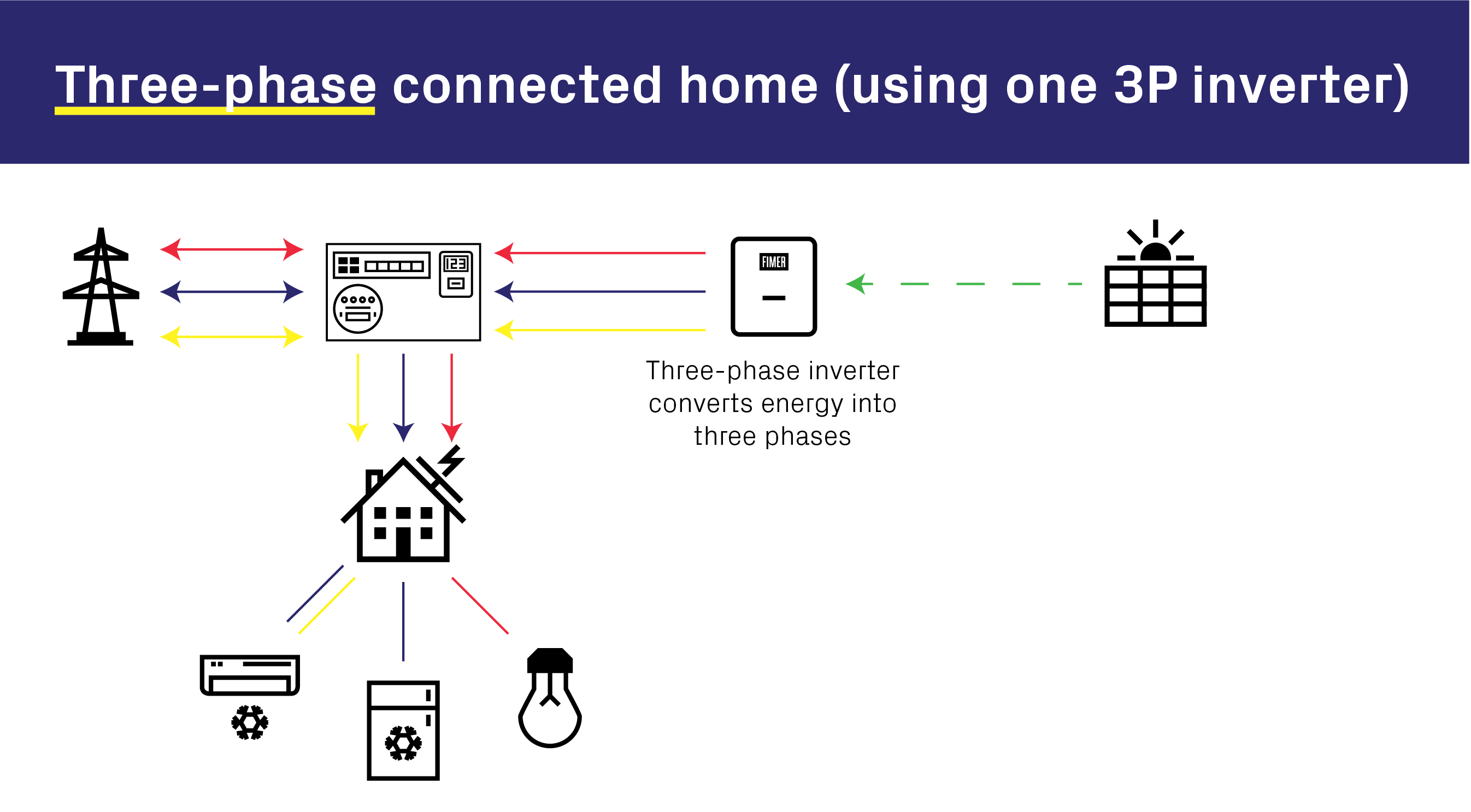
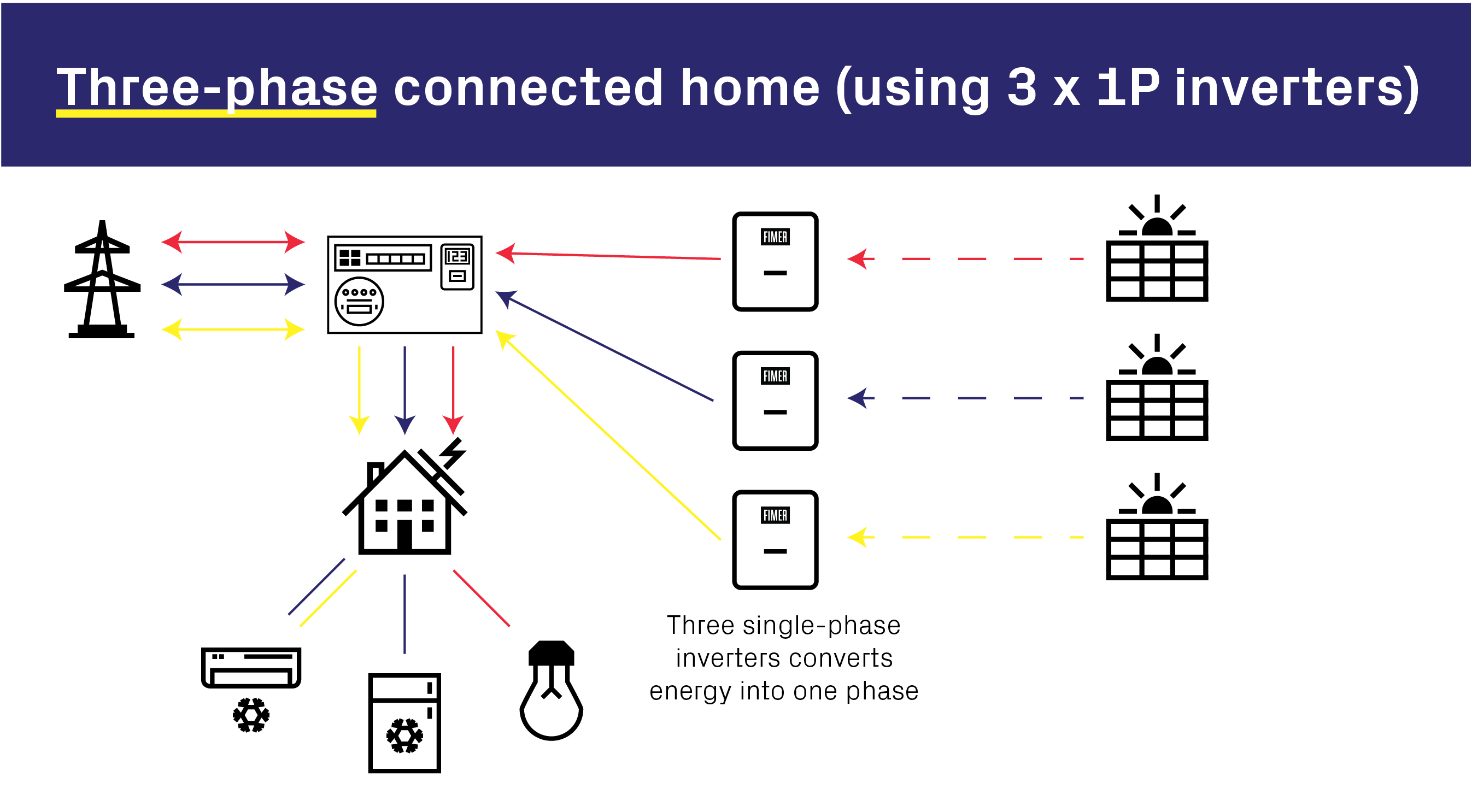
String Inverters & Micro-Inverters
String inverters are essentially a standalone box that will take the collective output from your solar panels connected together in one or more “strings” and convert the DC energy produced into AC energy for self-consumption or export to the grid.
Micro-inverters are mini devices placed onto the back of every solar panel. They will convert the energy of that solar panel only to AC energy. Generally, these inverters are used when a home has severe shading issues or when you need to see each individual solar panel's performance.
String inverters have a lot of benefits compared to micro-inverters
- They are cost-effective. You only need to buy one string inverter to do the whole job. This saves a lot of money, not just for the number of inverters required but also the cabling and labour costs.
- Less chance for installation issues. There is much less wiring required when using a string inverter, which means less risk of installation and commissioning issues.
- Easier troubleshooting, if there is an issue with a string inverter, it is easier to replace one system than many micro-inverters under panels on the roof.
String inverters and shading
When there is significant shading on a roof, it has traditionally meant that string inverters aren't the best option. This is true for a lot of the string inverters on the market. If one panel has shading, it will limit the power output of the whole string that the panel is connected to, making solar generation less efficient.
However, FIMER's PowerGain technology ensures that if one panel has shading on it, it will calculate the average peak voltage for the whole string and keep producing optimal energy. This technology has been proven to be as effective as micro-inverters or optimisers at less cost. This technology is included free in every FIMER inverter and provides the ultimate value for money.
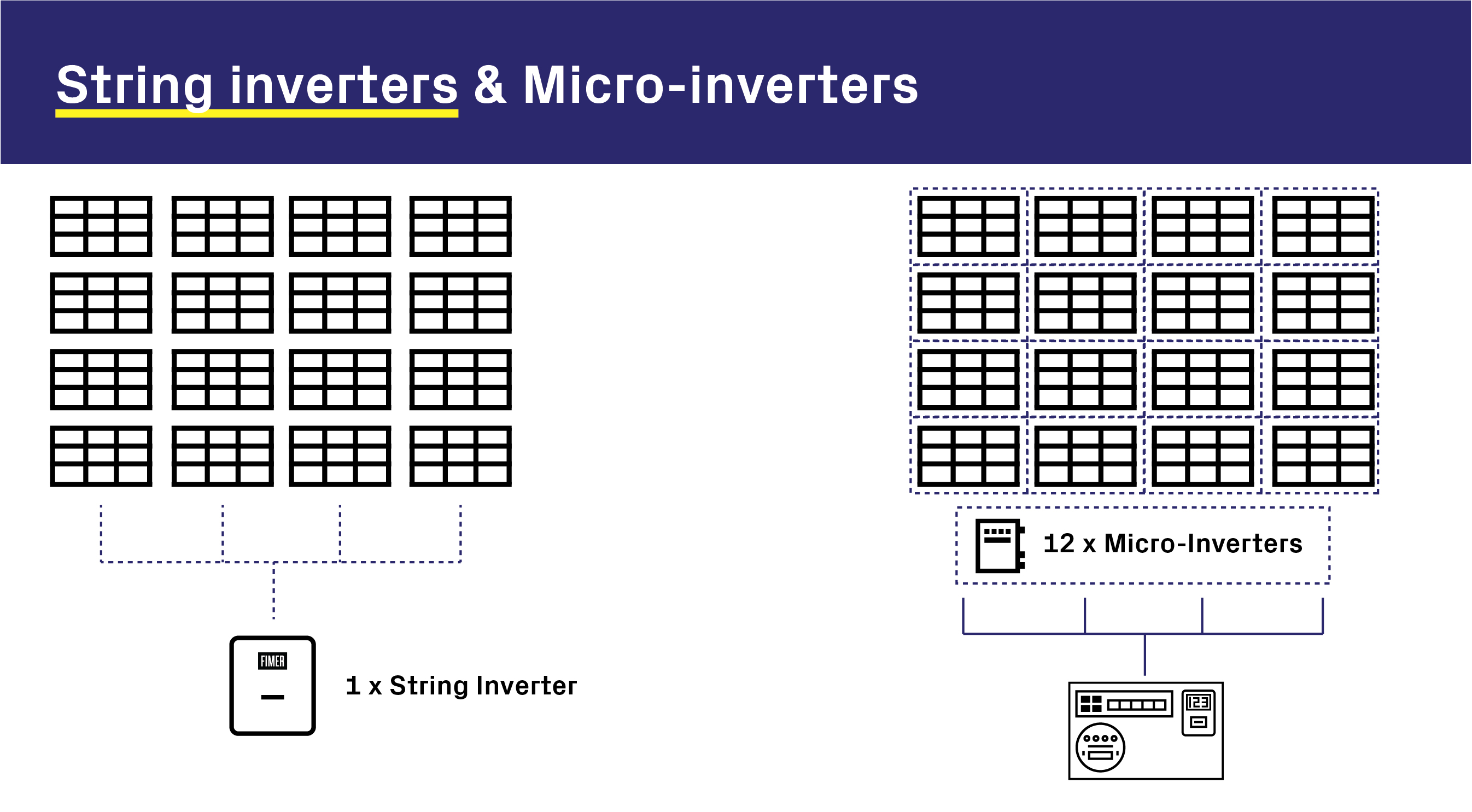
Hybrid Inverters & Battery-Ready Inverters
These types of inverters are essentially the same, and people will interchange them. They are used when you are either going to install batteries at the same time as your solar, or you may want to install batteries later.
Hybrid inverters will convert energy from DC to AC for self-consumption or export to the grid (like standard inverters), but they will also push the DC energy straight into the battery for storage and then, when needed, convert the energy to AC energy for self-consumption.
Most hybrid-inverters are compatible with only a select range of batteries. For instance, FIMER's REACT 2 hybrid inverter will only work with the REACT 2 battery modules (whether you choose 1, 2 or 3 modules).
Another feature to look at when looking at these inverters is how they support back-up protection when the grid power fails.
Some hybrid inverters offer no blackout protection, so even if you have a battery connected and the grid goes down, the inverter will power off, and your system won't work, and your home will have no power.
Then there is a Multiple Mode Inverter that offers blackout protection with a slight delay (a few seconds). If there is a blackout, the inverter will kick over to standalone mode and you will be able to power a portion of your house. FIMER's REACT 2 solution enables you to power a portion of your home during a blackout, whether at night (using energy in the battery) or during the day (using energy generated from the panels). You will still be able to charge your batteries during the day and use the energy at night if the grid was down for longer than anticipated.
Another option is UPS Multiple Mode Inverter which will come on without any delays. This is necessary if you require seamless power for medical reasons etc.
Make sure you discuss your battery needs and expectations with a qualified and experienced solar installer who will be able to design up the right solution for your needs.
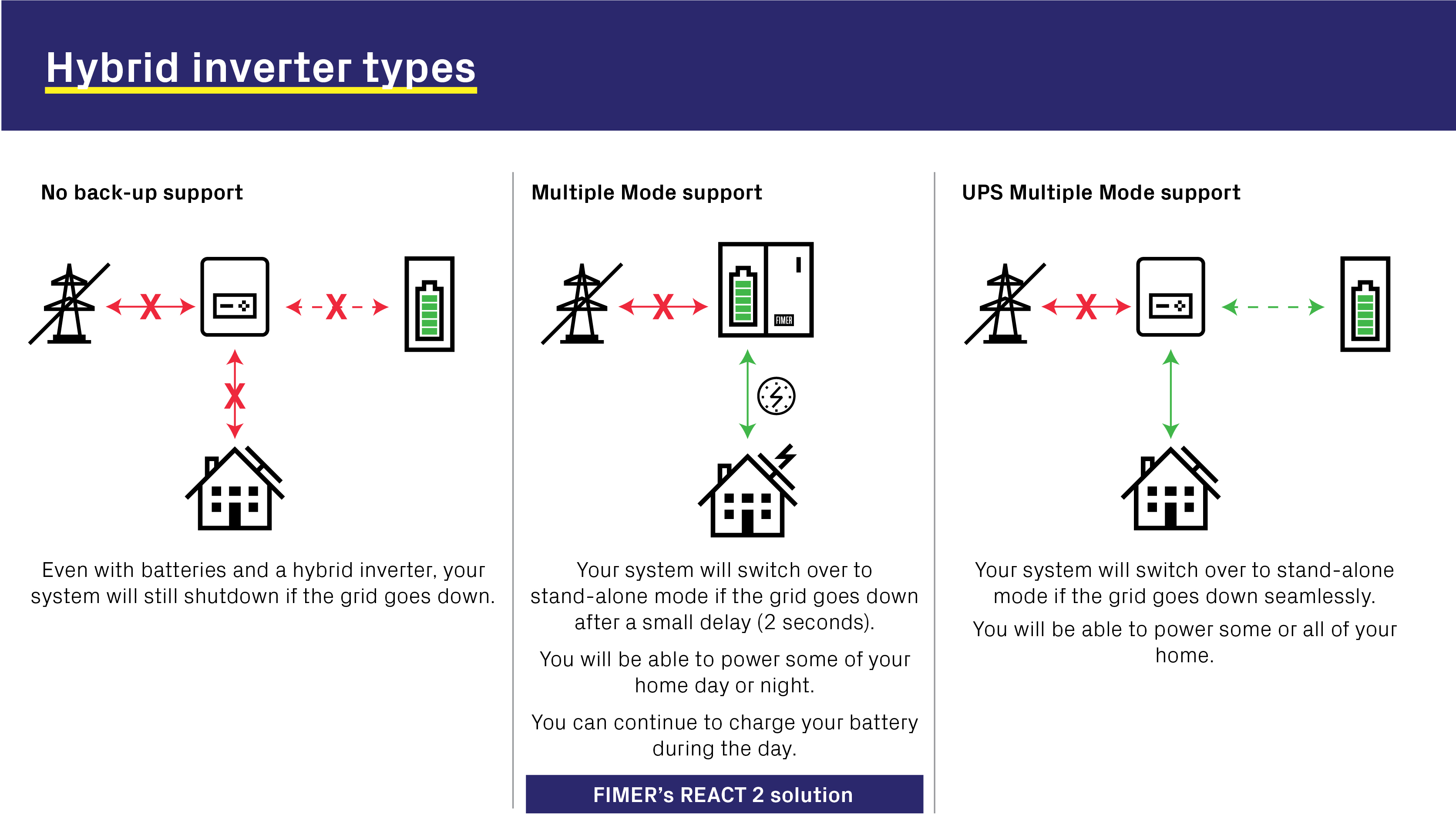
Will I need a hybrid inverter if I already have solar installed?
Suppose you already have solar installed and want to install a battery but don't have a hybrid inverter. In that case, you will still need to get a battery inverter that has both an AC & DC connection (like the REACT 2), plus the batteries.
You will face energy losses doing it this way, as you will find multiple energy conversions taking place compared to batteries connected directed to a hybrid inverter.
